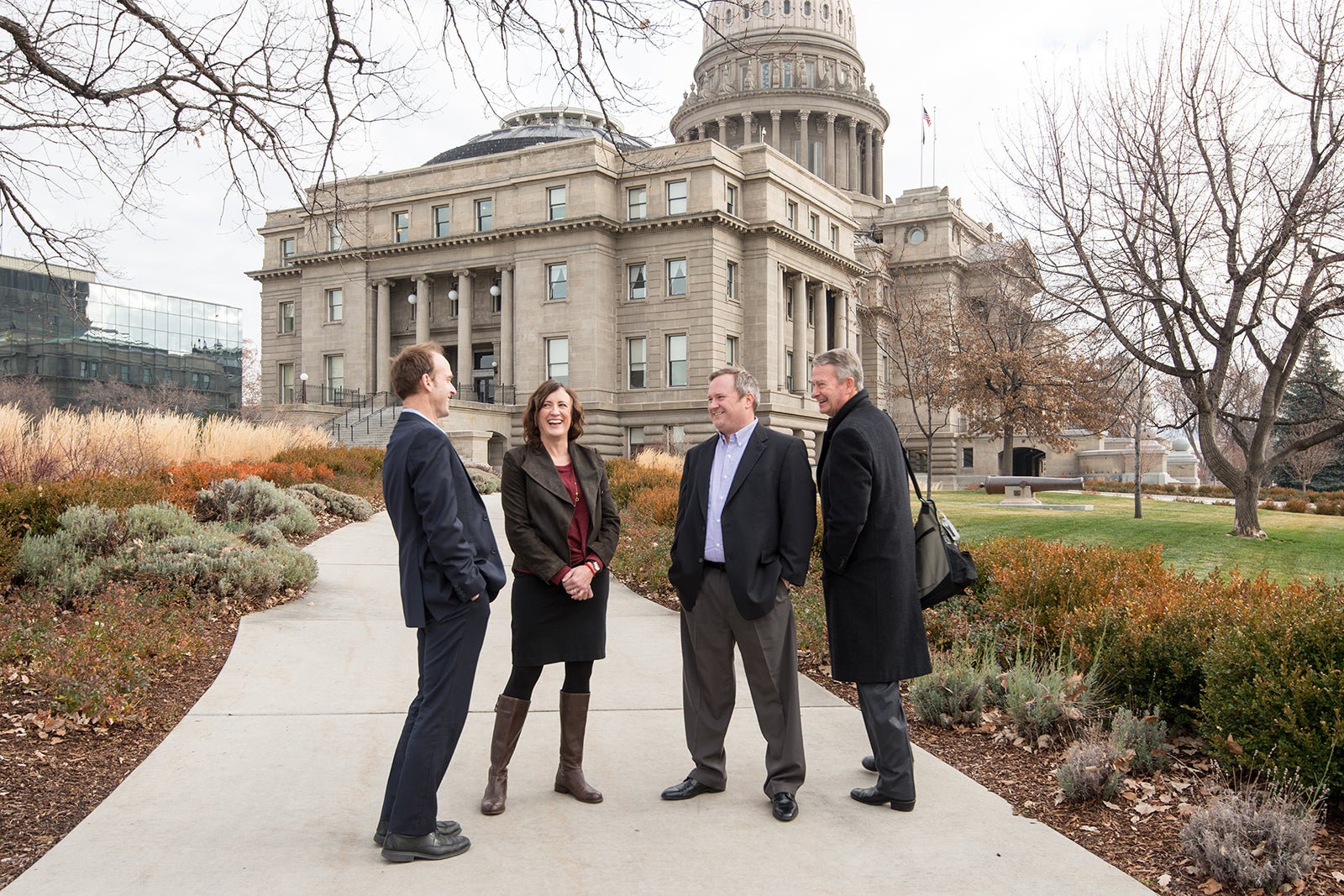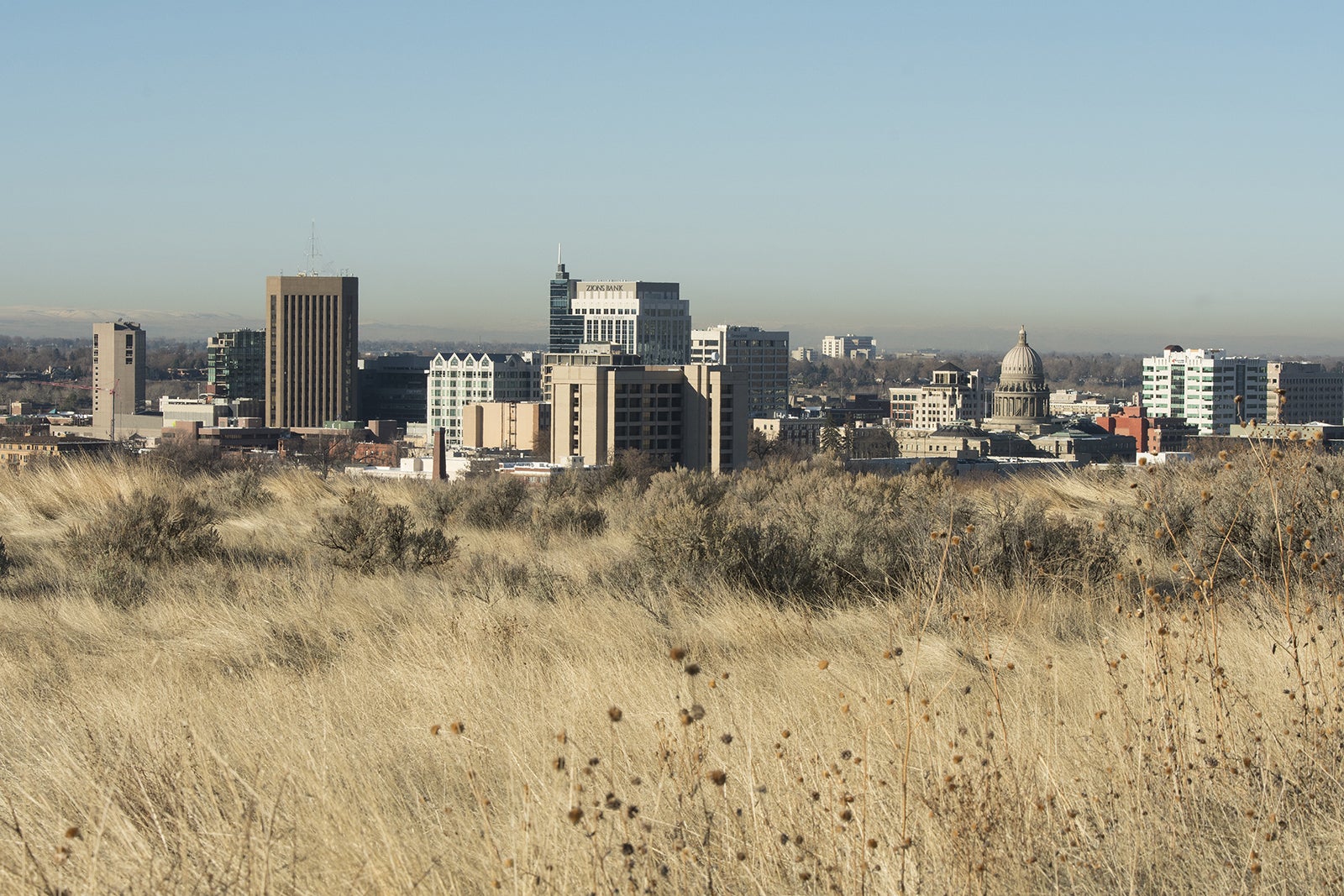The School of Public Service Blends Research and Service for the Public Good

Since its inception, Boise State University has proudly upheld its state-mandated mission to be an educational leader in public affairs. Especially in recent years, this mission has gathered both strength and momentum as the university has distinguished itself as a valuable resource for policymakers around the state, as well as a beacon for students who wish to become public policy researchers, educators or leaders, themselves.

Like education, research is collaborative, and nowhere on campus exemplifies the spirit of collaboration more than Boise State’s School of Public Service. Five years ago, Boise State responded to a statewide need for professionals with advanced social science research skills by creating its first doctoral program, the Ph.D. in Public Policy and Administration. Now housed in the School of Public Service, it stands as one of only two social science doctoral programs in the state and currently boasts more than 40 graduate students – a striking number for a program still in its infancy.
“If you go talk to folks at the statehouse, or at state agencies or nonprofits, you’ll see that they are staffed by people who have come through our public administration master’s program,” said Jen Schneider, director of the public policy doctoral program.
“There was an external demand for people who wanted to develop expertise in public policy, as well as a demand from our former students for continuing education. The doctoral program was a very natural, inevitable progression. It fills a gap in higher education in the policy sciences in Idaho and the region.”
– Jen Schneider
The program follows a cohort model, with the majority of students entering the program with a master’s degree or years of professional experience in a public policy arena, and moving through coursework and the dissertation process together. Graduates of the program already are receiving positive national attention for their research.
Above all else, the School of Public Service is guided by the belief that all academic and research fields likely contain a public policy component – from public art programs to research on the impacts of adolescent football concussions. The challenge is helping students, researchers and the public understand how research and public policy intersect, and how it impacts people’s daily lives.
In 2016, the School of Public Service created the Idaho Policy Institute to enhance the efficiency and effectiveness of Idaho state and local government, promote data-driven decision making, and encourage civil discourse and public engagement. One substantial component of that effort is public opinion research. The school conducts two scientific and rigorous annual surveys to discern public preferences and priorities on issues of economic and social importance – an annual statewide Public Policy Survey, an annual statewide Public Policy Survey that queries 1,000 Idaho residents on key policy issues, and the annual Treasure Valley Survey, which surveys 1,000 adults from Ada, Canyon, Boise, Gem and Owyhee counties.
“When the school was launched in 2015, I heard from a variety of community stakeholders about the importance of high-quality and objective public opinion research. Frankly, most local jurisdictions simply do not have the capacity to survey their residents to discern their priorities,” said School of Public Service Dean Corey Cook. “We have heard from state and local public servants about the importance of these data and that they have been used by nonprofits applying for grants as well as by people in the private sector.”
This past academic year, the school also abolished its traditional academic departments – what those in the academic world refer to as “silos” – to promote collaboration among professors and enable students to take a transdisciplinary approach to their education.
Moving beyond departments not only creates more flexibility to offer the courses our students need when they need them, said Cook, “it has promoted deeper research collaborations across the school and facilitated the creation of new interdisciplinary academic programs that ensure that students have the knowledge and skills that prepare them for careers after graduation.”
Throughout this magazine, you’ll find an in-depth look at some of the pivotal research being conducted by students and faculty in the School of Public Service, as well as research highlights from across campus. The future of the school continues to look bright: in order to accommodate the school’s growth and cement its role as a policy anchor and collaborator, planning is currently under way to build a new School of Public Service building on campus, which will be located on Capital Boulevard – a straight one-mile shot from Idaho’s capitol building.
“The School of Public Service has the honor of contributing to the public good in very tangible ways – by educating the next generation of public policy leaders, by conducting outstanding objective public policy research and by sharing that research with our elected officials and the public. This new building, constructed within view of the capitol, will make our role as an anchor institution all the more visible.”
– School of Public Service Dean Corey Cook
The Student Becomes the Teacher
In May 2017, Dr. Stephanie Lenhart became the second graduate of Boise State’s Ph.D. in Public Policy and Administration program.
Post graduation, Lenhart remained on campus to become a visiting assistant professor teaching energy and climate change policy in the graduate program, as well as teaching undergraduates in the environmental studies program. Here, she talks about her experiences in the graduate program.
How would you sum up your doctoral research?
I was looking at the expansion of the organized electricity market from California to other parts of the West. This type of regional grid integration improves reliability and economic efficiency and facilitates the integration of wind and solar resources. I examined how stakeholders overcame longstanding differences and negotiated conflicting authority to create a new energy imbalance market (EIM). This structure extends a market platform operated by the California Independent System Operator and allows real-time electricity trading to address unforeseen imbalances. To date, 11 utilities have joined the EIM including PacifiCorp, the parent company for Rocky Mountain Power, and Idaho Power, which will begin active electricity trading in 2018.
You’ve been asked to participate in workshops and present your research in the U.S. and abroad – why is a proposal for an electricity market in the West of global interest?
Countries around the world are trying to find ways to integrate low carbon energy resources into their systems and this energy transition requires new institutions and governance structures that span traditional boundaries. The problems we’re dealing with here are similar to those faced by other regions and there is much to be learned from how change is occurring in countries around the globe.
Tell us about your current research.
I’m part of a research team that received a grant from the McKnight Foundation to examine how municipal utilities and electric cooperatives are responding to the opportunities and challenges of distributed energy resources, like rooftop solar and community solar gardens. Municipal and cooperative electric utilities are for the most part locally regulated, so they set rates at the local level and make local decisions about how to best serve their customers. These utilities provide electricity to just over 20 percent of the population across the U.S. and their territories cover broad geographic regions, yet they’re really understudied. How do these consumer-owned utilities frame the current challenges and opportunities presented by new technologies and clean energy resources? That’s what we’re researching.
